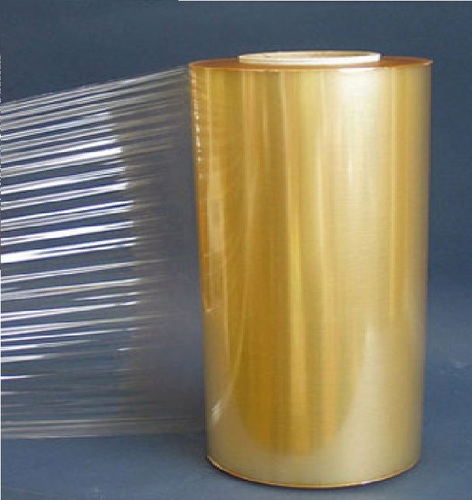
How does cling film stick? Cling film (also called plastic wrap, saran wrap, cling wrap, and food wrap) sticks to surfaces because of static electricity and because of the properties of the plastic it is made of.
Cling film (Saran wrap) is another of those products that we can’t live without, but which were discovered by accident. A chemist called Ralph Wiley was working for a company called Dow Chemical in 1933. Ralph was washing beakers after experiments, and he came across a couple of beakers that he couldn’t clean. They had been used in experiments on producing dry-cleaning liquids, and the leftover liquid had covered the vial in a strong protective layer. This material was polyvinylidene chloride (PVDC). It didn’t become Saran Wrap straight away. The chemists at Dow Chemical managed to make a bad smelling, greasy, dark green film that they could spray onto items with the material. They used it to protect planes and cars. During World War 2, PVDC was used on many products, and its ability to keep air and water out of things was noted. After the war, Ralph Wiley and his boss John Reilly managed to remove the color and the smell and started to use it to cover food. John Reilly called it Saran after his wife SARah and his daughter ANn. Sales took off through the 1950s, closely tied to the uptake of home refrigerators. After World War 2, people had more money, and the price of refrigerators came down. There were more in-home refrigerators and more people saving leftovers. Cling film (saran wrap) was the perfect product.
Saran wrap is a very useful product for covering food because it is very good at keeping water and even oxygen away from the food. This is also the reason why it was sprayed on planes. The US navy wanted to protect their planes from sea spray, so they sprayed them with saran wrap. It is very good at doing this because the plastic is made of polymers, and these polymers are very strongly attracted to each other. In fact, they are attracted to each other so strongly that there are no gaps for water or oxygen to get through them and spoil your food.
Cling film is made by melting plastic pellets and then forcing the resultant liquid through a pipe. Compressed air is blown through the pipe to make the liquid plastic expand into a bubble. The plastic cools and sets, and the bubble is collapsed and rolled flat. The flattened plastic is then rolled onto the cardboard tube and placed in the box, ready for use.
So, how does cling film stick? Cling film used to stick because of static electricity. When you peel the outer layer of Saran Wrap off the roll, there is a lot of friction, and electrons from the atoms in the lower layer are rubbed off onto the layer still left on the roll. That means the piece you have cut off has more electrons and has an electric charge. This creates static electricity. The plastic it is made of is a very good insulator, so electrons cannot flow through it, and the charge hangs there for a long time. When you put the cling film down on a plastic bowl or a ceramic plate, there is a slight opposite charge, and the two materials stick to each other. This only works on insulators because the charge in the cling film has nowhere to go. Cling film doesn’t work on metal bowls because they are very good conductors, and the static charge is very quickly removed from the cling film.
SO why “used to”? Modern cling film does actually work on metal and that is down to a few changes. PVDC, the plastic that cling film is made of, turned out to be very unsafe for the environment, so it was replaced with low-density polyethylene (LDPE). It was safer, but it wasn’t quite as good at keeping out water and oxygen, and it wasn’t quite as good at holding a static charge, making it a little less sticky. To keep their cling film clingy, companies started to coat the plastic in a very thin layer of weak adhesive. The adhesive is just strong enough that it sticks to itself, or whatever you are sticking it to, but not strong enough that you can’t get it off or it leaves marks. The two surfaces are kept together because of Van der Waals forces, which is the way lizards stick to walls. The individual molecules have positive and negative sides, and they attract each other. Cling film has a large surface area, which makes the adhesion fairly strong. And that is what I learned today.
Sources
https://www.sciencefocus.com/science/why-does-clingfilm-cling
https://www.theguardian.com/notesandqueries/query/0,,-194889,00.html
https://en.wikipedia.org/wiki/Plastic_wrap
https://en.wikipedia.org/wiki/Saran_(plastic)
https://uspackagingandwrapping.com/plastic-wrap-101.html
https://www.thoughtco.com/history-of-pvdc-4070927
https://gizmodo.com/how-does-cling-wrap-cling-5807661
https://www.reddit.com/r/askscience/comments/124bw0/why_does_cling_film_glad_wrap_stick_to_its_self/ By Luccadomina – Own work, CC BY-SA 4.0, https://commons.wikimedia.org/w/index.php?curid=47887317
